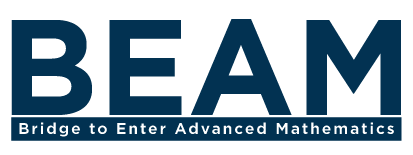What Are Liar and Truthteller Puzzles?
In liar and truthteller puzzles, you're presented with a situation where you are speaking with people who either always lie or always tell the truth. They're often presented as an example where you are on an "island of knights and knaves," where knights always tell the truth and knaves always lie (and normals could either tell the truth or lie). You must make some deduction based on statements that various people on the island have said. A classic puzzle might be this one:
Among the three people A, B, and C, one is a knight, one is a knave, and one is a normal.
A says "I am normal."
Then B says "That is true."
Then C says "I am not normal."
What are A, B, and C?
How Are Liar and Truthteller Puzzles Valuable Mathematically?
The puzzles teach deductive logic and reasoning by cases directly. For example, in the puzzle above, we immediately deduce that A is not a knight, for a knight would never say "I am normal." If A were normal, then B can't be a knave, since they are confirming that A is telling the truth. This would make B a knight and C a knave. It is impossible for C to be a knave because C would be telling the truth when saying "I am not normal." Hence, A cannot be normal either, and we know that A is a knave. Already, we have seen case analysis, logical deduction, and an embedded proof by contradiction.
Additionally, liar and truthteller puzzles benefit close mathematical reading. They require strong attention to detail; one cannot simply read them looking for key phrases, and there is no "one way" to solve them. Students internalize the idea that statements can be given a truth value. Finally, they learn the mathematical meaning of "if" and how it differs from normal English usage.
For example, the Liar and Truthteller puzzle might transition to solving this problem (from the Math Kangaroo contest):
There are 50 bricks colored red, white, and blue in a box. The number of white bricks is eleven times the number of blue ones. There are fewer red ones than white ones, but more red ones than blue ones. How many of each color brick are there?
Reading each statement, understanding what makes it true, and then analyzing in a step-by-step fashion considering all cases is essential to this (and many other) math problems. By drawing this distinction explicitly, students can see how to solve difficult problems.
Liar and Truthteller puzzles can also be used to begin exploring the idea of mathematical proof (and false proofs) by analyzing an argument for the truth or falsehood of each statement.
How Might This Class Run?
Ultimately, the class is yours to run in whatever way you feel will best serves the students. Here is one potential timeline.
- 3 days: Solve several liar and truthteller puzzles, building up to more challenging variants. A good source is the book What is the Name of This Book? by Raymond Smullyan.
- 2 days: Depending on student progress, continue with the liar and truthteller puzzles or introduce another type of puzzle.
- 4-5 days (or however much time is left): Solve math problems that use deductive reasoning, case work, working methodically, and the idea of finding a contradiction to disprove an idea. Draw explicit parallels between these math problems and the methods used to solve logic puzzles previously.
Problems To Use
There are numerous examples of such puzzles online, but you can use the above puzzle for your application. We can provide copies of What is the Name of This Book? for the class.
